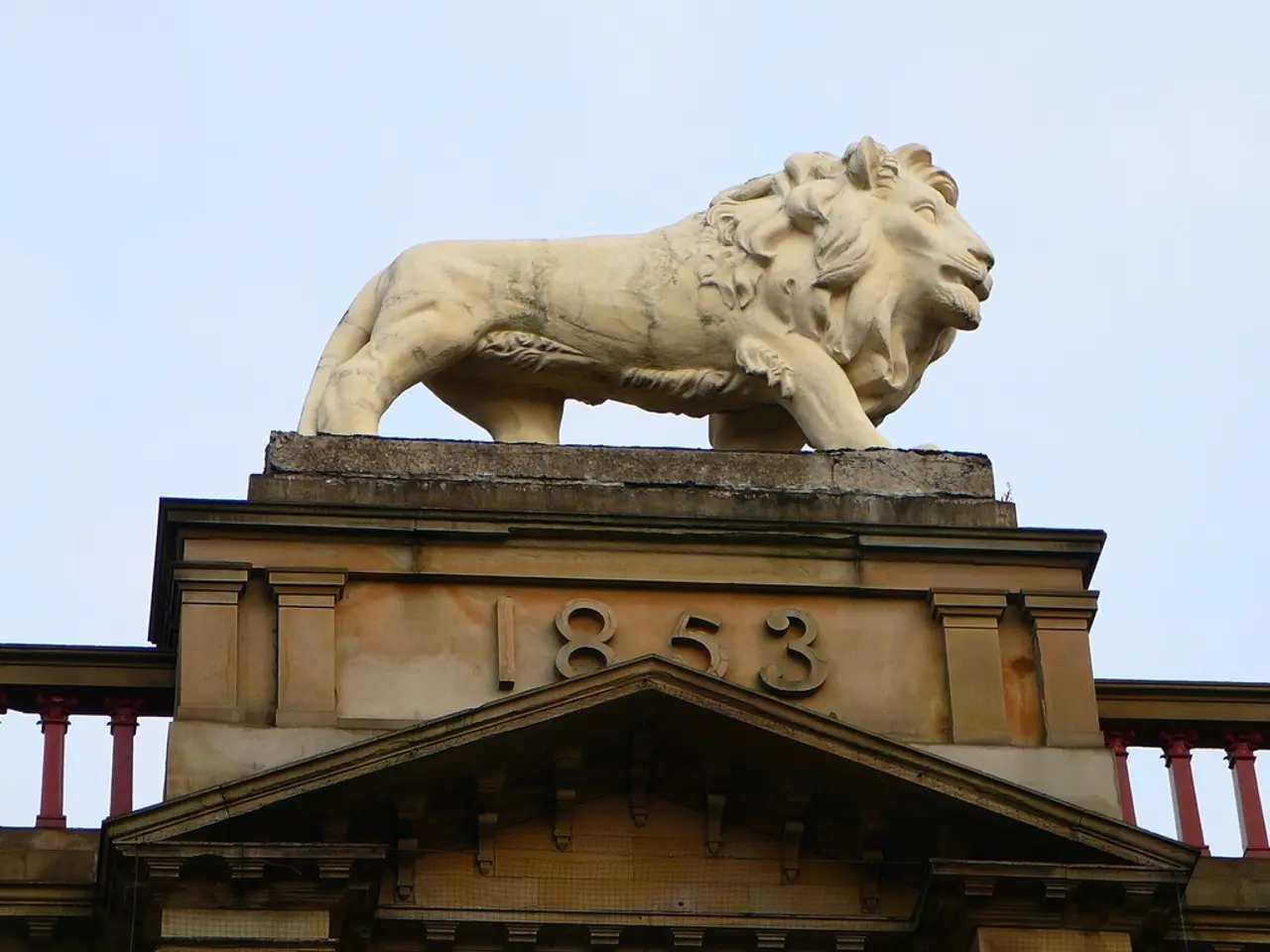Debate among researchers points to China as the origin of the renowned winged lion statue found in Venice
In a groundbreaking discovery, a recent study published in the journal Antiquity has revealed that the winged lion statue perched atop a column on the Piazzetta San Marco next to Saint Mark's Basilica in Venice was imported from China.
The study, conducted by archaeologists from the University of Padua and the Ca' Foscari University of Venice, has challenged traditional narratives about the local, Anatolian, or Syrian production of the winged lion statue. Previously, the statue was believed to have originated from Syria or the Hellenistic period.
The scientists compared the muzzle and mane of the winged lion statue to Tang Dynasty zhènmùshoù sculptures, finding a striking resemblance to the tomb guardians from this era. The lead isotope analysis of the bronze statue's copper also points to its origin in the Lower Yangtze River region of China.
The 300-kilogram bronze statue of the winged lion was likely brought to Venice by the uncle and father of Marco Polo, during their time at the court of Kublai Khan around 1266-1268. This suggestion challenges the belief that the lion was transported to Venice when Constantinople was destroyed and looted by Crusaders in 1204.
The winged lion statue, despite earlier beliefs, was not a part of the loot from Constantinople. In fact, there is no evidence to prove that the lion was transported to Venice during that time.
The intention and logistics behind the winged lion statue's journey from China to Venice remain unknown. However, it is believed that the statue was acquired during the stay of Marco Polo's family at Kublai Khan’s court.
Some alterations were made to the winged lion statue's exterior upon its arrival in Venice, including the removal of a pair of horns and the addition of a wig. These changes were likely made to adapt the statue to the Venetian context.
The winged lion, a holy emblem of Venice's patron Saint Mark, has been a symbol of the Italian city for centuries. Its Chinese origins, previously a mystery, have now been uncovered, adding a new layer of intrigue to the history of this iconic statue.
The column on which the lion statue is perched was erected at the end of the 12th century, but the lion was only first mentioned at the end of the 13th century during its restoration. This discrepancy further supports the theory that the statue was not originally from Venice.
The scientists' findings have shed new light on the history of the winged lion statue, providing a fascinating insight into the Silk Road trade and the connections between China and Europe during the Middle Ages. The study serves as a reminder of the rich cultural exchanges that have shaped the world we live in today.
Read also:
- Transforming Digital Inventories in the Food Industry: A Comprehensive Guide for Food Businesses
- Munich Airport Unveils Its New Electrical Vehicle Charging Parksite
- Vehicle electrification and bidirectional charging technologies could potentially reduce EU energy expenses by a staggering €22 billion annually by the year 2040.
- Rapid Construction of Rajasthan's 435 Megawatt Solar Power Plant in Eight Months Reduces Carbon Dioxide Emissions by Over 700,000 Tons







